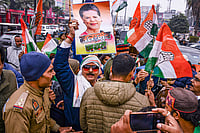India's agricultural economy accommodates nearly 65% of the nation's population, yet financial inclusion remains an age-old issue. Though the government schemes like Jan Dhan Yojana have brought in millions of citizens into the mainstream banking sector, the reality is that rural regions remain devoid of easy access to financial products.
Traditional banking networks only infrequently reach rural areas due to logistical challenges, distrust, and weak financial education. Saving, borrowing, or sending money securely for those not easily reached by banks or electronic payment systems is an everyday hassle.
This is where blockchain and cryptocurrency are entering the scene—not as a panacea, but as a means to potentially empower rural society.
Getting to Grips with Blockchain and Crypto in Plain English
Blockchain is essentially a digital ledger of accounts—a clear, secure, and unalterable record book. Each transaction is recorded in an open format that can be easily checked by everyone, making cheating virtually impossible.
Cryptocurrency such as Bitcoin or Ethereum is a digital currency that relies on blockchain technology. It can be sent from one person to the next directly without a bank involved. This framework of direct transfer can be extremely helpful in areas where banking is difficult to access.
In the case of rural India, this would be an inexpensive, faster, and more secure way of conducting financial transactions without relying so much on physical infrastructure.
Why Rural India Faces Speed Bumps on Access to Finance
The access divide in rural India is greater than distance to a bank office—it is a matter of deep-seated systemic issues:
Rural households have no steady income sources, thereby are excluded from credit from formal sources.
Bank penetration is patchy—villages may have one branch serving thousands of people spread over vast areas.
Digital payment adoption is being prevented by poor internet penetration, low digital literacy, and trust issues.
Informal lenders charge very high interest rates, which creates debt traps.
These factors create a scenario in which the financial empowerment process is being derried and poverty has taken deep roots.
How Blockchain Could Change the Game
Blockchain has certain attributes that can address these issues head-on:
Transparency and Trust
Every blockchain transaction is open and traceable, which should curb fraud. In rural communities that have not been interested in formal banking in the past, the transparency of blockchain might be able to generate trust.
Low Transaction Costs
Remittances and bank transfers, especially across regions or countries, are expensive. Blockchain payments could slash those costs significantly, so it is cheaper to send money back home for migrant workers.
Accessibility Without Physical Banks
You don't need more than a mobile phone with internet access for blockchain. While internet penetration outside the cities is still lower, more and more low-cost data plans and smartphones are bridging the gap.
Faster Transactions
Transferring money through traditional banking will take days or hours when done across state or country lines. Blockchain transactions can be completed in minutes, anywhere.
Applications of Blockchain in Rural India
Farm Payments and Supply Chain Tracing
Farming communities tend to get delayed payments from middlemen or buyers. Blockchain can enable peer-to-peer payments between buyers and farmers, enabling faster payments and fair prices.
Additionally, blockchain can be utilized to track produce from farm to shelf, delivering evidence of origin and quality, which will translate into premium prices in the market for farmers.
Microfinance and Community Lending
Blockchain-based smart contracts can make microloans easier to disburse and process. Smart contracts are electronic contracts that release funds only when agreement terms are met, eliminating risk of default.
Land Ownership Records
Land conflicts are widespread in rural India due to poor record-keeping. Blockchain can securely keep land records, and it would be impossible for them to be altered or forged. This would protect farmers' rights and reduce courtroom battles.
Government Subsidies and Welfare Distribution
Fertilizer, seed, or rural employment schemes are typically postponed or siphoned. A decentralized framework of distribution based on blockchain can ensure the benefits directly reach the target beneficiaries and with fewer intermediate parties.
Overcoming the Challenges of Crypto in Rural India
Although great promise lies in blockchain, several challenges must be overcome in order for it to be deployed successfully in rural areas:
Digital Literacy
The majority of rural communities have not yet become comfortable with using highly advanced digital technologies. Massive-scale information programs and training would be required to teach people how to use blockchain-based platforms securely.
Internet Infrastructure
Reliable and affordable internet still has not reached most rural communities. Without a solid foundation in the form of decent internet infrastructure, blockchain-based services cannot be effectively rolled out.
Regulatory Clarity
India's crypto laws are yet to evolve. There has to be a conducive and clear legal framework to facilitate large-scale adoption, especially in financial inclusion efforts.
Trust and Cultural Barriers
Rural communities are rooted in word-of-mouth and personal trust. Having a purely digital and decentralized system would entail building trust over time through pilot programs and participatory methods.
The Role of Local Governments and NGOs
For blockchain to truly have an impact in rural India, cooperation among government agencies, NGOs, and private technology firms is essential. Pilot initiatives concentrated on a particular sector—like agriculture, health payments, or microfinance—may allow for testing the technology in actual working conditions before expansion.
Local governments could contribute by:
Embedding blockchain in welfare disbursals
Facilitating digital literacy initiatives
Providing incentives for rural business adoption
NGOs can act as a bridge by educating communities, simplifying the benefits in their own languages, and bridging trust and security concerns.
Scaling Blockchain Beyond Finance
Land disputes are a gigantic issue in rural India. Records tend to be decades old, kept in poor condition, and open to being tampered with. Blockchain-enabled land registries could keep ownership information safely, provide transparency in transfers, and eliminate fraud.
Example: Andhra Pradesh and Telangana already have experience with blockchain land records to minimize conflicts and accelerate transactions.
Agricultural Supply Chain Tracking
Farmers tend to sell their produce to intermediaries who fix prices and dictate market access. Blockchain supply chains can trace the complete process from farm to consumer, allowing farmers to get better terms and ensuring customers receive quality produce.
Example: A coffee grower in Karnataka might be able to certify their beans as organic and fairly traded through blockchain verification, commanding better-paying customers.
Rural Healthcare Payments
Patients in rural health facilities tend to pay directly. Blockchain-enabled health wallets might hold patient data and settle insurance claims in real-time, eliminating administrative holds.
Challenges in Bringing Blockchain to Villages
Digital Literacy Gaps
The technology will not function unless individuals understand how to operate it. Rural dwellers are still in need of basic education on operating digital wallets, protecting passwords, and recognizing scams.
Limitations of Infrastructure
Reliable electricity and consistent internet are still issues in some rural locations. Without them, blockchain systems are unable to operate optimally.
Regulatory Uncertainty
India's policy with respect to cryptocurrency is changing. Blockchain use in supply chain and government operations is being promoted, but payment in cryptocurrency is still legally in question.
Risk of Scams
New technology attracts scam artists. Lacking education, rural groups might fall prey to Ponzi schemes masquerading as crypto investment opportunities.
The Bigger Picture: Blockchain as Part of a Larger Ecosystem
Blockchain is not enough to address rural India's financial issues. It must be joined by a wider ecosystem comprising:
Inexpensive mobile and internet connectivity
Government digital innovation policies
Financial literacy programs customized to rural audiences
Partnerships with local cooperatives and self-help groups
When combined with these factors, blockchain can serve to create a system under which rural communities are not mere consumers of financial products but active contributors to the digital economy.
A Likely Implementation Roadmap
A practical way of implementing blockchain in rural India would go through the following phases:
Pilot Projects in a few villages for a single application, i.e., direct benefit transfers or farmer payments.
Training in the local language using easy-to-understand examples to demonstrate how blockchain operates.
Infrastructure Buildup with public-private collaborations to enhance internet penetration.
Phased Scaling to additional villages after the model is successful.
Integration with Other Services such as healthcare records, rural commerce, and education payments.
Rural Healthcare Payments
At rural health clinics, patients tend to pay in cash. Blockchain-backed health wallets may hold patient data and settle insurance claims in real time, eliminating administrative lag.
The Role of Government and Private Sector
Pilot Programs in Selected Villages
Instead of a mass rollout, starting with small steps is crucial. Pilot projects—like direct benefit transfers or payment systems for farmers—can be piloted in a handful of villages before scaling up.
NGO and Cooperative Partnerships
Local cooperatives and NGOs already enjoy community trust. Collaborating with them for blockchain training and onboarding might accelerate adoption.
Local-Language Apps and Tools
Blockchain platforms need to be in regional languages, and voice-enabled features for those who are not reader-friendly.
Incentives for Early Adoption
Small rewards—such as lower fees or bonus credits—may motivate farmers, shopkeepers, and SHG members to give blockchain transactions a try.
Global Lessons for India
Nations such as Kenya, whose mobile money service M-Pesa was developed, have demonstrated that financial tech can succeed even in poor rural communities if it addresses genuine needs. Although M-Pesa is not based on blockchain, its success indicates that rural communities embrace digital finance when it is low-cost, accessible, and reliable.
Similarly, remittance services based on blockchain in the Philippines have lowered costs for migrant workers sending remittances back home. India can take lessons from these instances and adapt solutions to suit local cultural and economic environments.
A Vision for the Next Decade
Suppose a rural India where:
A farmer is paid immediately when selling vegetables to a supermarket in a different state.
Land conflicts are uncommon because ownership records are tamper-proof.
Migrant workers remit money to their families for free in seconds.
Government subsidies reach directly into beneficiaries' accounts without leakages.
Villagers rely on their transaction history to get fair microloans without mortgaging land or gold.
This vision can be a reality if blockchain is used with care—overcoming literacy, infrastructure, and trust constraints first.
Looking Ahead: A More Inclusive Future
The potential of blockchain for rural India is not necessarily in displacing the existing system, but in enhancing and fortifying it. By reducing costs, accelerating transactions, and increasing transparency, blockchain may prove to be a valuable instrument for financial inclusion.
If well-planned—with participation of locals, appropriate training, and facilitating regulations—blockchain may assist millions of rural Indians in accessing enhanced financial opportunities, escaping exploitative networks, and joining the digital economy in full swing.
The journey will not be simple, but the potential payoff is well worth it. Over the next few years, as technology and connectivity continue to advance, rural India may be an unexpected frontrunner in blockchain adoption—transforming what is currently regarded as a high-tech urban trend into a bottom-up force for change.





















